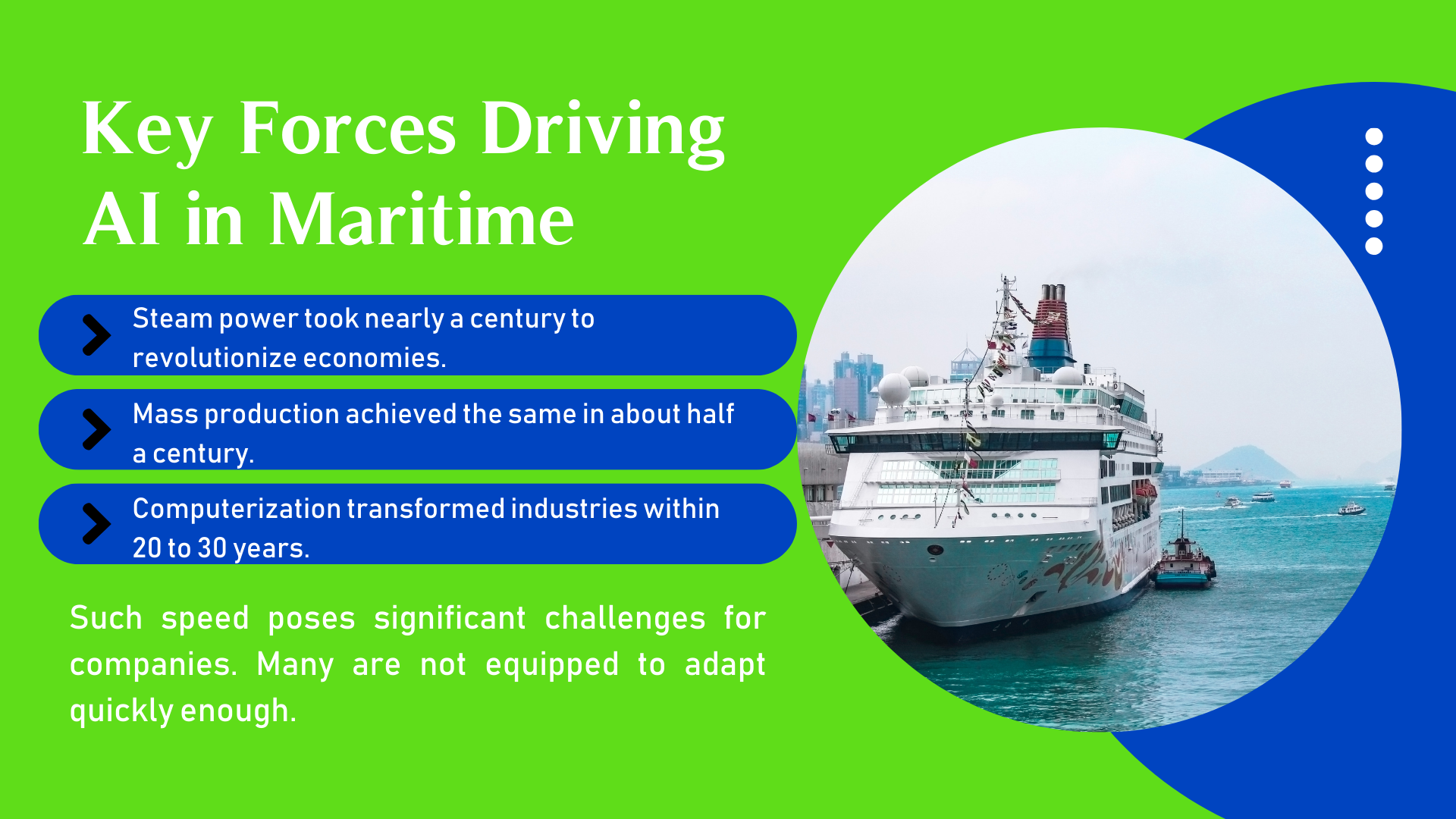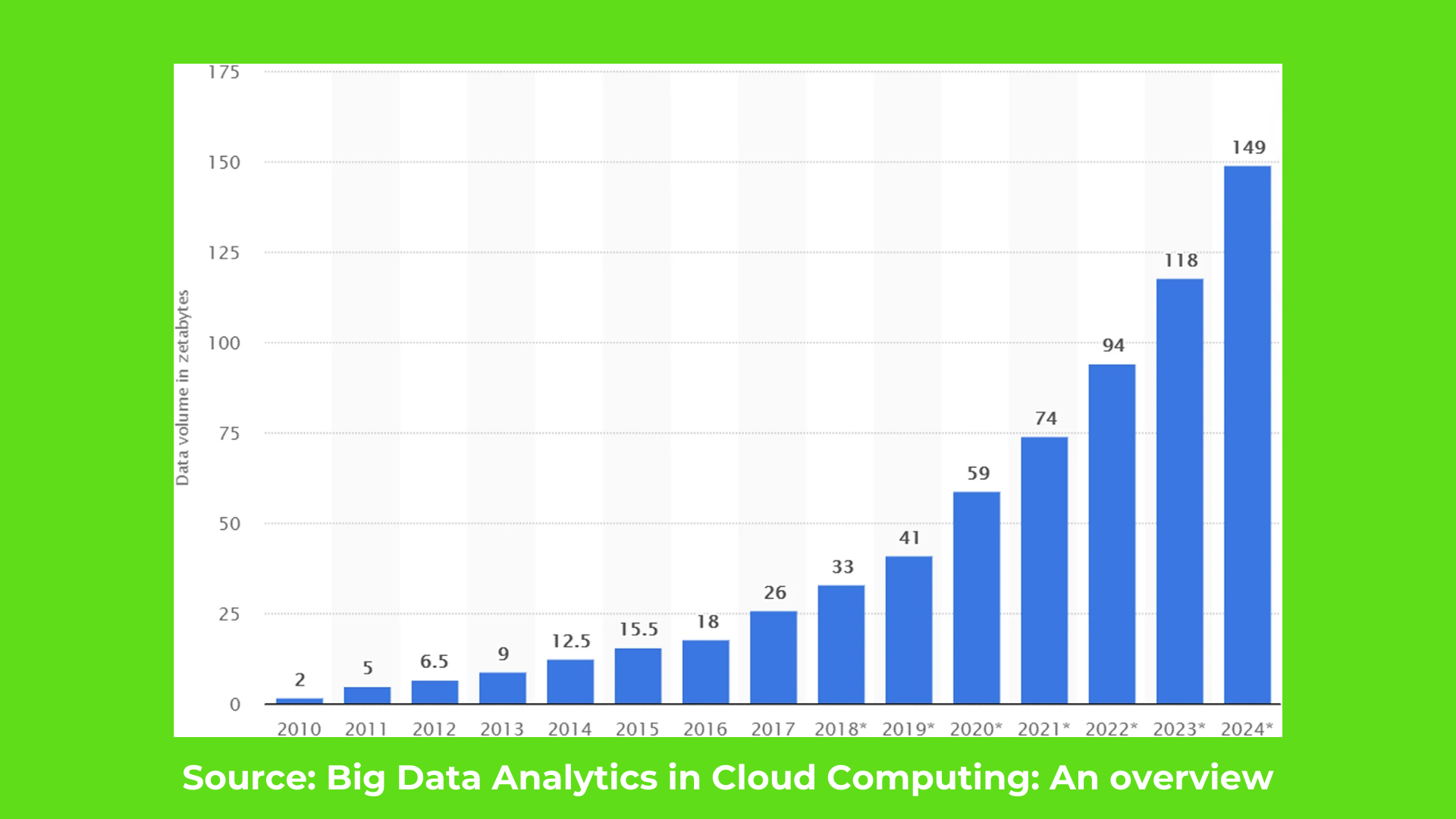
The maritime industry, often perceived as traditional and slow to adapt, is experiencing a transformative shift with the integration of Artificial Intelligence (AI). As global trade continues to rely heavily on maritime transport, AI is addressing long-standing challenges, improving operational efficiency, and advancing sustainability.
In this article, we explore various applications of AI in the maritime sector, ranging from current implementations to forward-thinking innovations, and highlight its potential to revolutionize the industry.
However, despite its recognition as essential for future-proofing businesses, AI adoption faces challenges, including skepticism and the absence of immediate, tangible returns on investment (RoI), which hinder broader acceptance.
Traditionally, shipping has been a highly manual and intuition-driven industry. Navigation relies heavily on human expertise, maintenance is still largely reactive, and operational decisions are often made based on limited data.
The integration of AI represents a pivotal shift, transforming shipping from a conventional, labor-intensive sector into a cutting-edge, data-driven industry. AI offers not only unparalleled access to knowledge but also the ability to leverage creativity, unlocking opportunities to fundamentally change the way we work and operate.
Today, we are in the Fourth Industrial Revolution, driven by AI.

This speed poses significant challenges for companies, many of which are not equipped to adapt quickly enough.
Unlike the isolated advancements brought by steam power or electricity, AI is powered by a seamless integration of multiple disruptive technologies:
By 2025, it is estimated that the world will produce 463 exabytes of data every day—an almost unimaginable amount.

The challenge for businesses isn't collecting, storing, or acquiring this data, but rather making sense of it and using it effectively to drive growth.
Today's consumers expect instant access to everything, often at the lowest cost. The competitive edge no longer lies solely in having the best product or offering the lowest price.
Companies now face the challenge of:
The question is no longer if AI will impact your business but how prepared you are to adapt.
Preparing for AI doesn't mean replacing your workforce with machines, pouring millions into experimental projects, or hiring an isolated team of data scientists. The modern approach is agile, iterative, and collaborative. It's about:
Make AI work with you, not instead of you.
AI in Maritime is just getting started—stay tuned for the next episode, where we'll dive into real-world scenarios showcasing AI's transformative impact.
In the meantime, don't wait to see the change—be the change. Get in touch with us to take the lead and experience the transformative power of AI augmentation in action.
AI improves efficiency through predictive maintenance, route optimization, and automated decision-making that helps reduce costs and enhance reliability.
The most common challenges include skepticism, high initial investment, and lack of immediate ROI, which discourages companies from integrating AI solutions.
Yes, AI-driven optimization reduces fuel consumption, decreases emissions, and enhances waste management, making maritime operations more sustainable.
AI increases safety through real-time risk assessment, monitoring vessel conditions, and advanced navigation assistance.
Companies should start with pilot projects and partnerships with AI-driven startups. The key is to augment the workforce with AI-powered tools rather than replace human expertise.
Stay ahead of the curve—start integrating AI in maritime today!